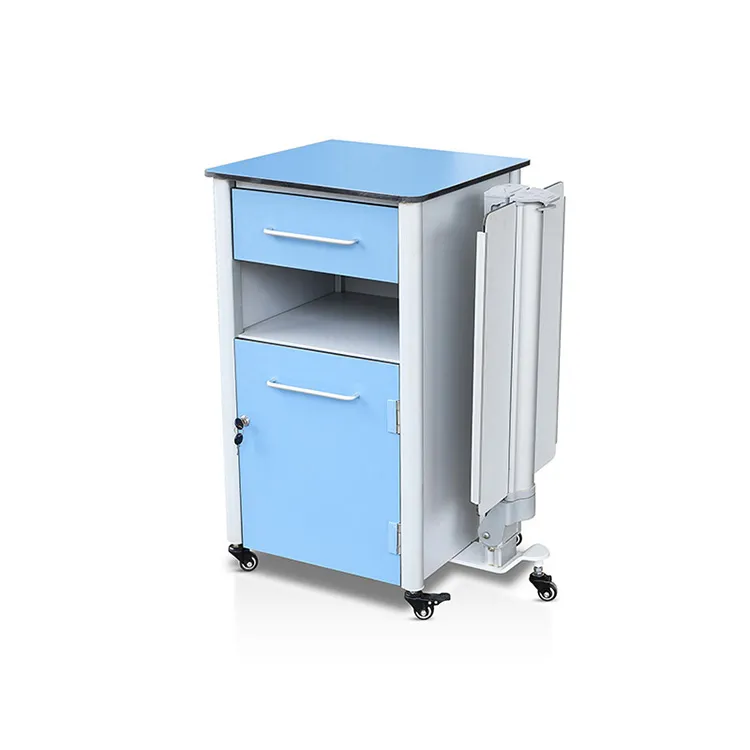Choosing the Right Hospital Furniture: Key Considerations for Healthcare Facilities
2024-07-27
Introduction
Selecting the right hospital furniture is a critical decision for healthcare facilities. The furniture not only impacts patient comfort and recovery but also affects the efficiency and well-being of healthcare providers. In this blog, we will discuss key considerations for choosing the right hospital furniture to create a functional, comfortable, and safe healthcare environment.
Patient Comfort and Well-being
1. Ergonomic Design
Ergonomically designed furniture reduces physical strain on patients, promoting comfort and aiding in recovery. Look for adjustable beds, chairs with proper lumbar support, and tables at appropriate heights to enhance patient comfort.
2. Pressure Relief
Choose mattresses and cushions designed to relieve pressure points and prevent bedsores. Memory foam, gel-infused, and air mattresses are excellent options for ensuring patient comfort during prolonged stays.
3. Aesthetics and Ambiance
The appearance of hospital furniture can significantly impact a patient's mood and overall experience. Select furniture with soothing colors and modern designs to create a welcoming and comforting environment.

Healthcare Provider Efficiency
1. Ease of Use
Furniture should be easy to use and adjust, allowing healthcare providers to focus on patient care rather than struggling with equipment. Electric beds, mobile workstations, and easily adjustable chairs improve workflow efficiency.
2. Mobility
Furniture on wheels and lightweight designs allow for easy movement and reconfiguration of spaces. This flexibility is essential for adapting to different medical scenarios and optimizing the use of available space.
3. Integrated Technology
Consider furniture that integrates technology, such as beds with built-in monitoring systems or workstations with electronic health record access. These features enhance the efficiency of healthcare providers and improve patient care.
Hygiene and Safety
1. Antimicrobial Materials
Select furniture made from antimicrobial materials to reduce the risk of infections. These materials inhibit the growth of bacteria, viruses, and fungi, ensuring a safer environment for patients and staff.
2. Easy to Clean
Furniture should be easy to clean and disinfect. Avoid fabrics and materials that are difficult to sanitize. Look for smooth surfaces, removable cushions, and washable covers to maintain high hygiene standards.
3. Safety Features
Ensure that the furniture includes safety features such as rounded edges, non-slip surfaces, and secure locking mechanisms. These features help prevent accidents and injuries, providing a safer environment for everyone.
Durability and Cost-effectiveness
1. Quality and Durability
Invest in high-quality, durable furniture that can withstand the demands of a busy healthcare environment. While the initial cost may be higher, durable furniture reduces the need for frequent replacements and repairs, ultimately saving money.
2. Warranty and Support
Choose furniture from reputable manufacturers that offer comprehensive warranties and customer support. This ensures that you have access to maintenance, repairs, and replacement parts if needed.
3. Budget Considerations
While it’s essential to invest in quality furniture, it’s also important to stay within budget. Compare different options, consider the total cost of ownership, and prioritize features that offer the most significant benefits to your facility.
Customization and Adaptability
1. Modular Furniture
Modular furniture allows for customization and adaptability to meet the specific needs of your facility. Modular units can be reconfigured and expanded as needed, providing flexibility for changing requirements.
2. Specialized Furniture
Consider specialized furniture for specific departments, such as pediatric units, ICU, or outpatient clinics. Tailored solutions ensure that the furniture meets the unique needs of each area, improving functionality and patient care.
3. Future-proofing
Choose furniture that can adapt to future technological advancements and changes in healthcare practices. Future-proof furniture ensures that your investment remains relevant and useful for years to come.
Conclusion
Choosing the right hospital furniture is a complex decision that requires careful consideration of patient comfort, healthcare provider efficiency, hygiene, safety, durability, and cost-effectiveness. By focusing on these key factors, healthcare facilities can create a functional, comfortable, and safe environment that enhances patient care and supports the well-being of healthcare providers.


